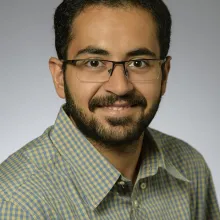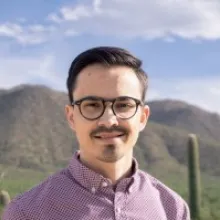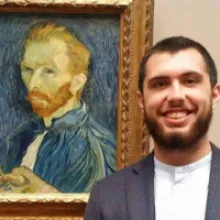When
Where
Webinar Materials
Video-recording:
Slide Presentation
Other Resources
Documentation
Containers
Workflows
Data
Orthomosaics (10% resolution)
ArcGIS map
About the Webinar
Calling all researchers who want to learn how to access and use high-throughput (HT) phenotyping data! In this webinar, team members from PhytoOracle, a scalable, distributed workflow manager for analyzing HT phenotyping data, will share their insights on the workflows they are developing using RGB, infrared, fluorescence, and 3D-scanner sensors.
Originally designed to process sensor data from the University of Arizona’s Gantry (the world’s largest outdoor phenotyping platform), PhytoOracle can be adapted to work on data from other platforms as it uses a master-worker framework for distributed computing (HPC, Cloud, etc.) and can run jobs in nearly all Unix-like environments.
Please join us for some early wisdom from the PhytoOracle team – it will spark your interest and curiosity into how you can leverage these tools for your own research.
For more background on the sensor data for which PhytoOracle is being developed, view our earlier webinar on TERRA-REF.
What You'll Learn
-
Leveraging container technology for reproducible science
-
The benefits of distributed workflows
-
How and why scientists and graduate students are writing open-source code
These skills are not just useful – the reality of modern research is that scientists in all fields need these skills to use the computational resources required to analyze their datasets.
User Experience Level
- Basic to Intermediate (command-line experience helpful)
About the Presenters

Michele Cosi is a second year PhD student at the University of Arizona, School of Plant Sciences under the supervision of Dr. Eric Lyons. He received his bachelor's and master’s degrees in Agricultural Sciences from Nagoya University, Japan, where he worked on the genomics of African wild rice species Oryza longistaminata and Oryza glaberrima. On the PhytoOracle project, Michele's contributions include development of the scalability infrastructure and processing infrared data.

Ariyan Zarei received his B.Sc. in Computer Science from Shahid Beheshti University in Tehran, Iran. He is currently pursuing his PhD in Computer Science at the University of Arizona, on applications of Deep Learning and Image Processing methods to detect and localize tumors in large and high resolution slides (WSI) of human breast tissues. Ariyan's role on the PhytoOracle project is designing machine learning, computer vision, and statistical models for geo-correction and stitching of high-resolution RGB image data.

Emmanuel Gonzalez graduated from Pacific Lutheran University with a bachelor’s degree in biology and now works in Dr. Duke Pauli’s lab at the University of Arizona. For the PhytoOracle project, Emmanuel is responsible for developing open-source code and distributed pipelines focused on understanding plant growth dynamics. Ultimately, his professional goal is to develop modular tools that growers can use to grow their crops more sustainably.

Travis Simmons is an undergraduate Biology major at the College of Coastal Georgia and also works closely under Emmanuel Gonzalez as a Virtual Phenomics Intern in Dr. Duke Pauli’s lab at the University of Arizona. As part of the PhytoOracle team, his primary contribution is the development of a distance-based coordinate matching algorithm for tracking plant growth over time.

